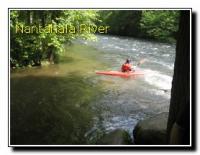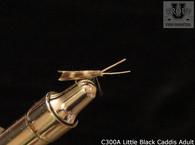
Most of the major rivers in the United States have had dams constructed for flood control, irrigation or for purposes of harnessing the raw power; and some have been created simply to reduce mosquito populations in an effort to control malaria. Behind each dam is an impoundment that provides great recreational opportunities as well.
The waters that flow from the releases have created great trout habitat by being cold and rich in dissolved minerals and algae. This ample supply of nutrients makes possible a generous population of aquatic insects which are the main staple of the trout’s diet in these rivers. Rivers that were once too warm to provide adequate trout habitat are now great trout fisheries for example, Chattahoochee River in Georgia, the Saluda River in South Carolina, The Delaware River in New York, and the Hoositonic River in Connecticut and the Madison river in Montana to just name a few.
The water held in these impoundments is stratified into three layers, the Epilimnion, or top layer of water; the Thermocline layer of water; and the Hypolimnion, or bottom layer. Generally speaking, the water becomes colder as the depth increases and the water released from the bottom is capable of supporting trout in the tailrace throughout the entire year. Due to the depth of the water at which it is released or due to the shallow nature of the lake, some tailraces will only support trout in the cooler months of the year. These tailrace waters are often referred to as “put and take” waters and some are used as “delayed harvest” waters.
Release schedules and their affect:
Wading tailwaters can be fun and productive however, great caution is in order. You must understand the release schedules for any tailwaters before you attempt to fish it by wading. It is also important to understand the release schedule if you intend to float the tailrace as the water can be turbulent when it is released. Some tailrace releases are controlled intermittently so that you will hardly notice any change in the water level. The Madison River outside the Yellowstone National Park is such a river. Some rivers do not have a schedule but they release water as needed for irrigation. The most important thing that anyone can do prior to fishing a tailrace is to check the USGS Real Time Water Flow and the water release schedule for the dam controlling the water where you intend to fish. These schedules can be found on line and here is an example of the Tennessee Valley Authority’s schedule for the water being released from the Norris Dam into the Clinch River.
Aquatic insects:
Some waters in tailraces are cold enough in their headwater sections to have a huge population of mayflies, caddisflies, midges, and stoneflies. The South Holston River (SOHO), in Tennessee is cold enough to support certain species of mayflies like sulphurs. It has become well known for its spectacular sulphur hatches. Some tailwaters just as they exit from the dam may support great caddisfly populations of the species Those species that prefer slightly warmer water. Also, as the tailwater flows farther and farther away from the dam, it warms up due to the environment and at some point it can no longer support a trout population. Prior to that point, there can be huge caddisfly populations as a result of the warmer water. Also Southern warmer tailwaters such as the Davidson River in North Carolina will support great populations of midges. So it is necessary to know the characteristics of the tailwaters where you intend to fish.
Trout populations:
Many of the tailwaters especially in the south are not capable of supporting a good year around population of trout. Others, like the Clinch River have a huge holdover from one year to the next. Many of the brown trout are in the 14 to 17 inch range with some wily old trout measuring as much as 30 inches. Then there are some other tailwaters that would have a few mostly brown trout that would reproduce. However, most of the tailwaters including the Clinch are supported by regular stocking programs in their home state. You will notice that I have referred to brown trout often when describing tailwaters and that is because they are the species that can grow to the largest sizes in this environment. But do not under estimate the rainbow trout that also flourishes in these waters and even occasionally brookies.
To learn detail information about many streams including useful hatch charts and useful fishing techniques,, please go to Trout University Streams.





